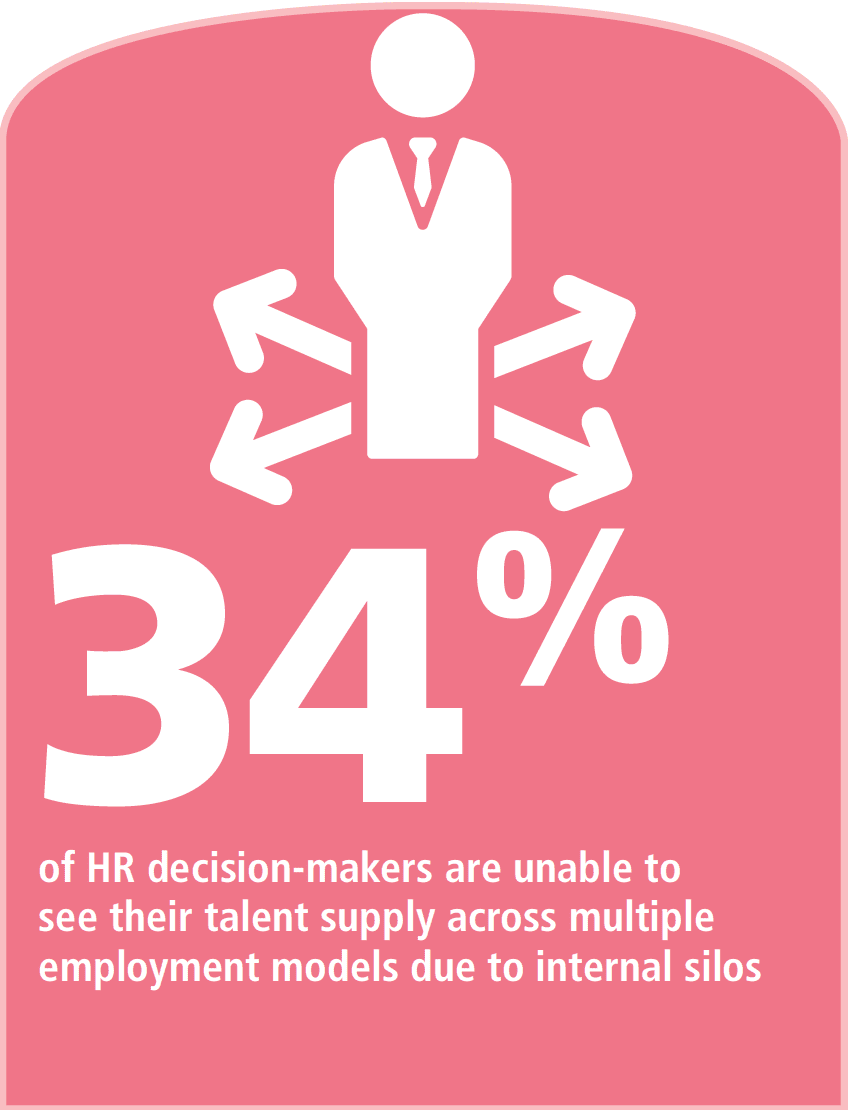Today’s technology can provide the answers to three challenging questions that HR continues to face.
By Ron Hetrick
Despite the proliferation of smart technologies and best practices, 65 percent of companies have had to adjust a business strategy because they could not secure the right talent in a specific function or geographic area. This finding comes from Allegis Group’s 2018 Talent Advisory Survey, a study of HR decision-makers, and demonstrates that organizations continue to deal with a lack of information when making talent decisions, which can have negative consequences for the business.
Chalking off poor results to talent scarcity won’t solve the issue, and improving talent acquisition capability is only part of the battle. The greatest sourcing operation won’t yield the right talent for an offering that pays too little. The best recruiters can’t make engineers appear where they don’t exist. The most efficient external talent acquisition approach is still more costly and time-consuming than simply redeploying a current contractor from another part of the business -if only the hiring manager knew about that contractor.
In nearly every wrong decision or missed opportunity there is some element of blindness gone awry. Data-driven solutions are giving companies the knowledge they need to eliminate that guesswork, and companies are taking notice. But if knowledge is power, specific knowledge is power that HR can use. A new level of specificity is what talent and business should expect from tools that draw on artificial intelligence (AI) and data science to deliver intelligence. With that in mind, what follows are three questions employers now have the power to answer specifically and confidently thanks to advances in data science and evolving talent best practices.
1. What is the right salary offer? Nearly one third (27 percent) of respondents to the Allegis Group survey say they lack access to market data in making decisions about how much to pay for a role. Organizations can now use solutions to gain detailed knowledge of the external market for talent. Today’s platforms analyze job descriptions, provide information on the talent supply by location, and deliver insight on compensation or bill rates by skills for the location. The result is a view into the external market for talent that can provide an objective basis for determining where to hire or engage talent, the costs associated with that talent, and the potential timelines for acquiring the right worker.

Technology can help. One solution to breaking down silos is leveraging a platform that brings data into one environment. Innovative technologies can provide the hiring manager or talent solutions partner with access to a complete universe of data, connecting the employer to the best possible talent for a role whether it’s a current employee, contingent worker, contractor, or prospect in a candidate database. Building such a system is no small task, and it does require both the data and technology know-how plus the willingness of different owners of data to take responsibility for the system’s success. Often, a talent solutions partner can be an objective, expert catalyst for such a change, or they can offer the technological platform for this total talent vision.
3. Who does the organization need? Forty-eight percent of employers in the Allegis survey find that when it comes to determining how much to pay for a role, they are challenged because departments and hiring managers have different ways of defining similar jobs or skills. In the past, the taxonomy of job descriptions, skills, and competencies was a major obstacle between the employer seeking talent and talent looking for work. What would it take to get them to connect without the need for a person to analyze and interpret the right person from a sea of information? The answer comes from data science.
Today, advanced analytics and machine learning applications can overcome the barriers of language inconsistency. In an optimized database, the recruiter or hiring manager can search for candidates based on job requirements and receive relevant results -people who can actually do the job, even if there isn’t a strong keyword match. This ability to interpret candidate information is helping organizations search their own talent supplies to pinpoint the right contractor, employee, or job seeker for the role they need. In a similar way, there are examples of advanced tools that help job seekers.
Moving Forward: Don’t Ignore the Technology
With access to data, organizations can connect to more knowledge than ever before to guide their decisions about how much to pay, where to look, and who to hire. The talent solutions market is evolving quickly as companies begin to turn that knowledge into specific, actionable information. In a time of talent scarcity, there is little room for guesswork. Put the right technology in play and much of that guesswork will become a thing of the past. It’s already happening today.
Ron Hetrick is director of labor market business intelligence for Allegis Group.














